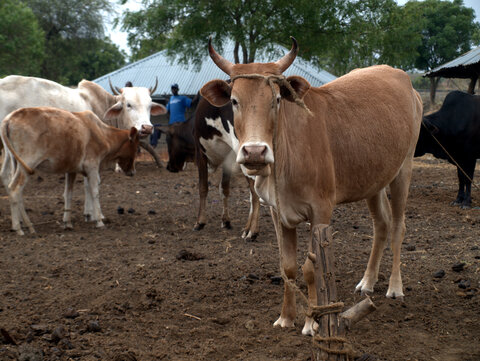Will treating cattle with insecticide control other pests?

The insecticides applied to cattle to control tsetse also kills biting flies and ticks. However, this has both good and bad consequences.
For better...
Ticks and biting flies transmit a number of diseases and cause direct physical damage to cattle as they bite. Treating cattle with pyrethroids can reduce both these effects. Farmers notice and appreciate the obvious decline in the numbers of ticks on insecticide-treated cattle, and this can help build confidence in the use of pyrethoids, even though trypanosomiasis is not transmitted by ticks. Nonetheless, this confidence in pyrethroids can help to promote the sustained use of pyrethroids for tsetse control.
..or worse
However, eliminating ticks from an area is not always a good thing.
First, indigenous breeds of cattle can develop a natural immunity to many tick-borne diseases (anaplasmosis, babesiosis, cowdriosis, theileriosis) if they are bitten by infected ticks when they are calves. Widespread treatment of cattle can reduce the tick population to such low levels that the cattle are not bitten enough, and thus the adults are highly susceptible to tick-borne diseases. And if naive, adult cattle become infected, then the disease is far more serious and can often be fatal.
Second, ticks can develop resistance to insecticides whereas resistance has never developed with tsetse populations. So, we should be careful to ensure that uncontrolled use of insecticide does not lead to pyrethroid resistance developing in local tick populations.
References
Torr, S., Eisler, M., Coleman, P., Morton, J. & Machila, N. (2002). Integrated control of ticks and tsetse: A report for the DFID Advisory and Support Services Commission (Project ZV0151; NRI code V0160). 150 pp.